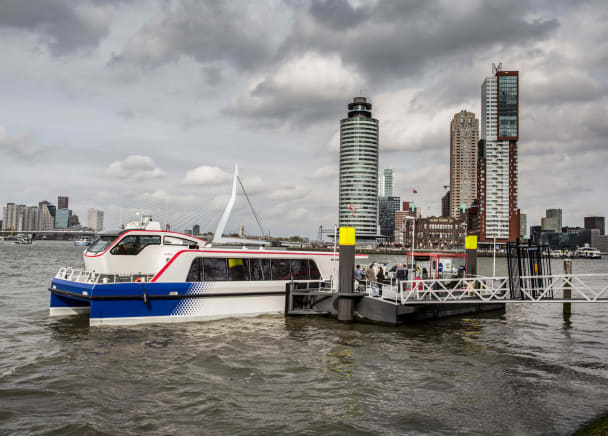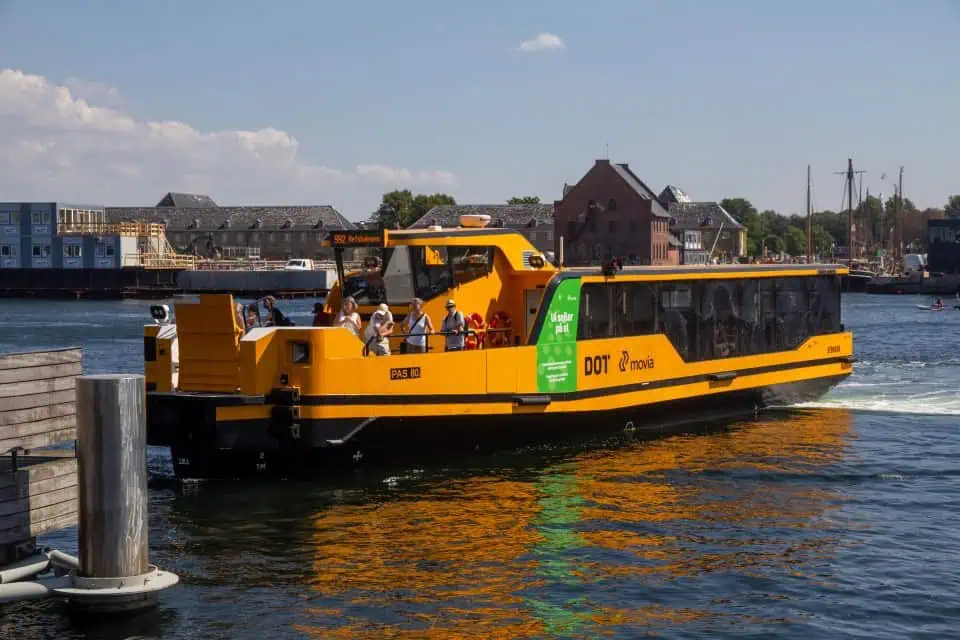Public transport-over-water operators as well as commercial parties maintaining ferry connections are facing the challenge of creating a charging infrastructure, a bare necessity in the transition to electric driven zero emission passenger transport. Connections to the grid as well as high power rapid charging capacity turn out to be hard to achieve and costly. Damen Shipyards offer not only e-ferries but also the know-how to create a viable business model with electric transport, including financing of the shore charging stations.
Authorities that issue concessions to operate ferry connections demand zero emission public transport in the near future or will be doing this within the next couple of years. Operators need to evaluate their business case in this energy transition. The cost of replacing a conventional diesel powered ferry with a new electric powered is one of the barriers. The high investment costs is a burden although over the over the lifetime of the vessel, fuel cost is saved and these reduced operational expenses prove to result in a lower cost of ownership over the vessels’ lifetime. Initial investment may be higher, but the cost of electric charging can turn out to be much less than bunkering diesel over the lifetime.

Power demand
The barrier to cross is installing the charging points for the electric vessels. Every time a ferry docks, passengers and their vehicles are offloaded while the new crowd of passengers and vehicles are already waiting to come aboard. They want to leave as soon as they are all on board. In this short timeframe, an electric ferry needs to be charged and ready for the next passage. Across the river, this might work. What if the destination is a remote island? Charging a ship’s batteries for an hours long passage within minutes may technically become possible at relatively short term. This would need a significant amount of megawatts of available electric power at the charging stations. During few minutes, the battery loading will take the power supply of a whole city. Such electric power demand would heavily interfere with all the other users in the area, or a dedicated power supply would have to be in place. In order to make any emissions gain, this power supply should run on zero emission energy sources – like green hydrogen or other renewables. Which option would be the applicable choice to cope with power demand – longer charging periods, own power supply, connections to the grid or power storage in a shore battery – can be different for every ferry operator. Local infrastructure of course plays a big role when determining the most efficient power supply. One thing is clear: creating the right charging station will require serious investment. In transport, where investments are high and margins are narrow, getting this investment financed may be hard.
Partnering
Damen Shipyards have gained experience with electric transport. Electric city ferries from Damen maintain connections in the city of Copenhagen. We participate in the inter-city network along the rivers Meuse and Noord between Rotterdam and Dordrecht. Getting the right parties together, like long term financiers and investors, we also participate in financing the infrastructure for the e-ferries we deliver. We aim to set-up partnerships to share perceived risks and create ability green transition over a period. We get the onboard energy management in line with the local solutions for charging. Having all the technical solutions straightened for flawless operation – because we design these ourselves proceeding on experience – we express belief in what we deliver. Partnering with our clients is our way to express dedication to the quality we deliver.












